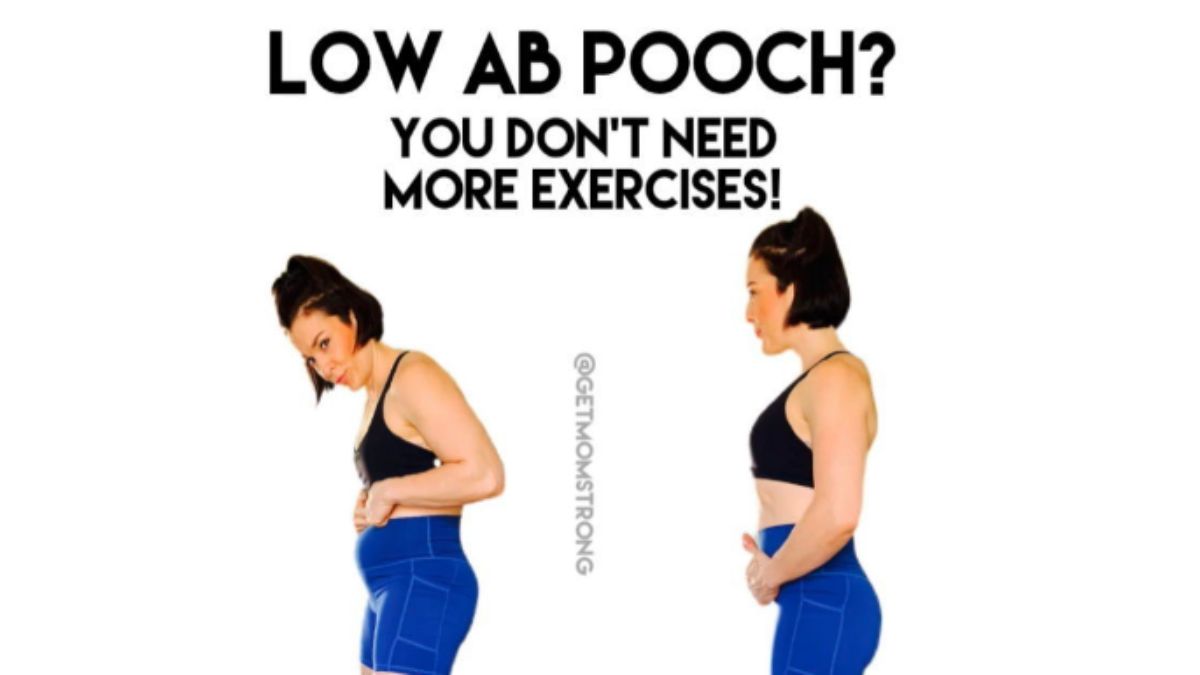Introduction
Do you feel frustrated by that stubborn lower belly bulge that just won’t go away? That lower bump, often called a pooch tummy, can affect your confidence and comfort. Whether it’s due to post-pregnancy changes, poor posture, or lifestyle habits, this guide will help you understand what causes a pooch tummy and how to flatten it.
This article walks you through what a pooch tummy is, how it forms, and the best ways to address it. You will also learn about effective workouts, posture tips, diet changes, and other proven methods to help tighten your lower abs.
What Is a Pooch Tummy?
A pooch tummy refers to the soft bulge of fat or skin that hangs or sticks out from the lower abdominal area. It may result from:
- Post-pregnancy recovery
- Hormonal changes
- Poor posture
- Weak lower core muscles
- Bloating or digestive issues
- Diastasis recti (ab separation)
Understanding the root cause is the first step to fixing it. Every woman’s body is different, but there are steps you can take to improve your core strength and reduce that belly bulge.
1. Targeted Exercises for Lower Belly Fat
a. Pelvic Tilt
Lie on your back, knees bent, feet flat. Tighten your core and tilt your pelvis upward. Hold for a few seconds, release, and repeat.
b. Reverse Crunches
Lie down with knees lifted and bent. Lift your hips and bring knees toward your chest. This focuses on lower abdominal muscles.
c. Leg Raises
Keep your back flat and lift both legs up slowly, then lower without letting them touch the floor.
d. Planks with Leg Lifts
Planks strengthen your whole core. Adding leg lifts activates the lower abs even more.
e. Heel Slides
Lie flat, slide one heel out, keeping your core tight. Repeat with the other side. This gentle move builds strength without strain.
2. Improve Your Posture
Poor posture pushes the stomach out and weakens core muscles. Focus on standing tall with shoulders back, chin up, and belly pulled in.
Try posture exercises like wall stands, bridge lifts, and seated posture drills. These moves help realign your spine and tighten your core.
3. Diet Tips to Reduce Belly Bloat
A pooch tummy is often worsened by bloating and water retention. Focus on clean, anti-inflammatory eating:
- Drink plenty of water
- Cut down on salty and processed foods
- Add more fiber from leafy greens, oats, and fruits
- Avoid carbonated drinks and chewing gum
- Eat small, frequent meals
Limit foods that cause bloating like beans, cruciferous vegetables, and dairy (if sensitive).
4. Address Diastasis Recti
Diastasis recti is a separation of the abdominal muscles, common in postpartum women. It can lead to a pooch belly. You can check for it by lying on your back and pressing your fingers in the center of your abs as you slightly lift your head.
Safe exercises to correct it include:
- Core compressions
- Modified planks
- Transverse ab contractions
Avoid crunches or sit-ups if you have ab separation. These can make it worse.
5. Wear Supportive Clothing
Compression leggings, high-waisted shapewear, or postpartum wraps can provide temporary support and help improve posture. These don’t fix the problem but can help with confidence and comfort.
6. Reduce Stress and Get Enough Sleep
Stress hormones like cortisol are linked to stubborn belly fat. Managing stress is essential. Try:
- Breathing exercises
- Gentle yoga or stretching
- Meditation
- Journaling
- Listening to calming music
Also, aim for 7 to 9 hours of sleep. Poor sleep leads to weight gain and hormone imbalance.
7. Stay Active Every Day
Movement matters. Along with targeted workouts, stay active with walking, dancing, swimming, or bike riding. Aim for at least 30 minutes of moderate movement most days.
8. Drink Detoxifying Fluids
Natural drinks like lemon water, cucumber-mint water, and green tea can help flush out toxins and reduce water retention.
9. Track Your Progress
Take weekly photos, measurements, or journal your routine. Progress may be slow, but consistency leads to long-term success.
10. Be Patient and Kind to Yourself
Your body has been through a lot. Whether it’s childbirth, stress, or aging, give yourself grace. Focus on progress, not perfection.
Conclusion
A pooch tummy can be tough to get rid of, but it’s not impossible. By combining exercise, better posture, healthy eating, and stress relief, you can flatten your lower belly. Stay consistent and celebrate small wins along the way. You deserve to feel good in your body.
Frequently Asked Questions
1. How long does it take to get rid of a pooch tummy?
It depends on the cause, consistency, and individual body type. With daily effort, visible results may show in 6-12 weeks.
2. Can you get rid of a pooch tummy without exercise?
Exercise is helpful, but diet, posture, and stress control also play big roles. A full lifestyle approach works best.
3. Is a pooch tummy the same as belly fat?
Not exactly. A pooch tummy often refers to the lower belly and may be caused by muscle separation, not just fat.
4. Are crunches good for pooch belly?
Not always. Crunches can worsen diastasis recti. Focus on low-impact, deep core moves like pelvic tilts and heel slides.
5. Does drinking water help reduce belly bulge?
Yes. Water helps flush out excess sodium and reduce bloating, especially in the lower belly.
6. Can posture really flatten my tummy?
Yes. Standing tall tightens your core and prevents sagging of the lower belly.
7. What causes a pooch tummy after pregnancy?
Usually it’s a mix of diastasis recti, stretched skin, and hormonal shifts.
8. Will shapewear reduce my pooch belly permanently?
No. Shapewear is temporary. It supports and smooths your body but doesn’t burn fat or tone muscles.
